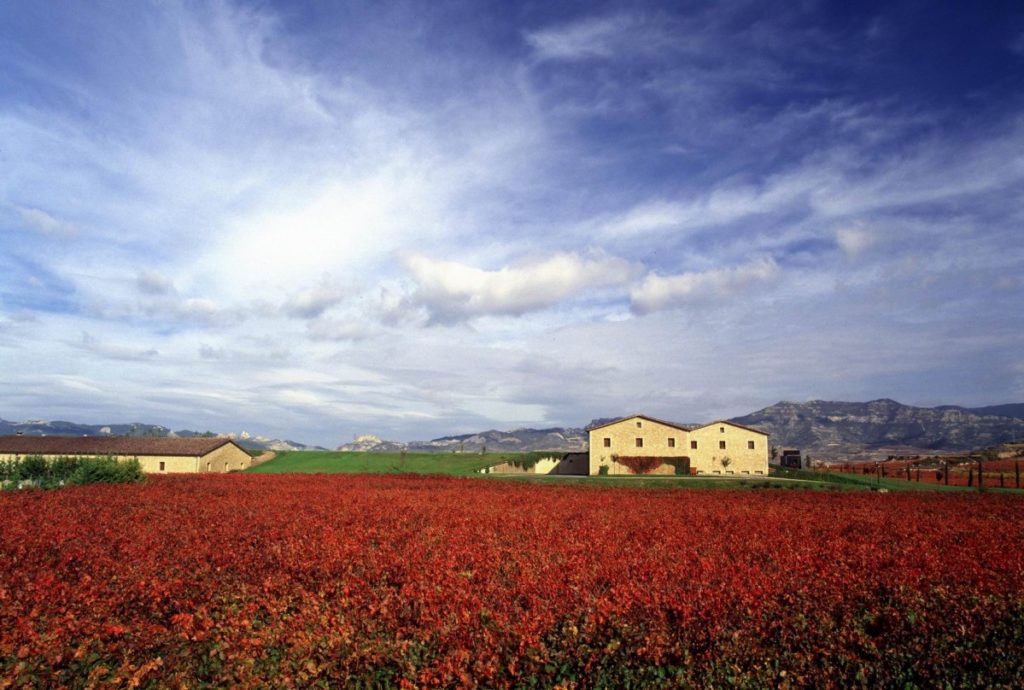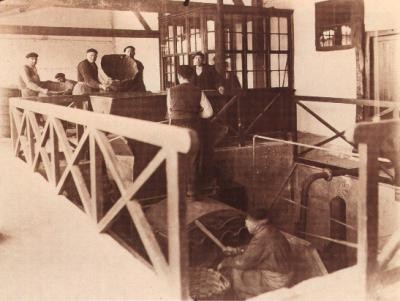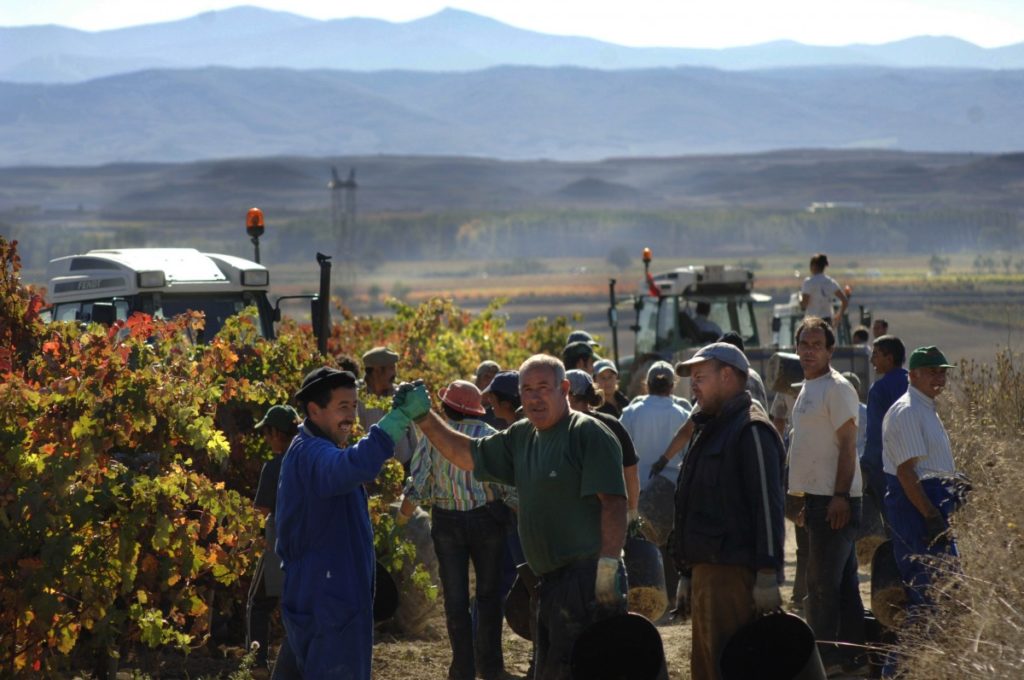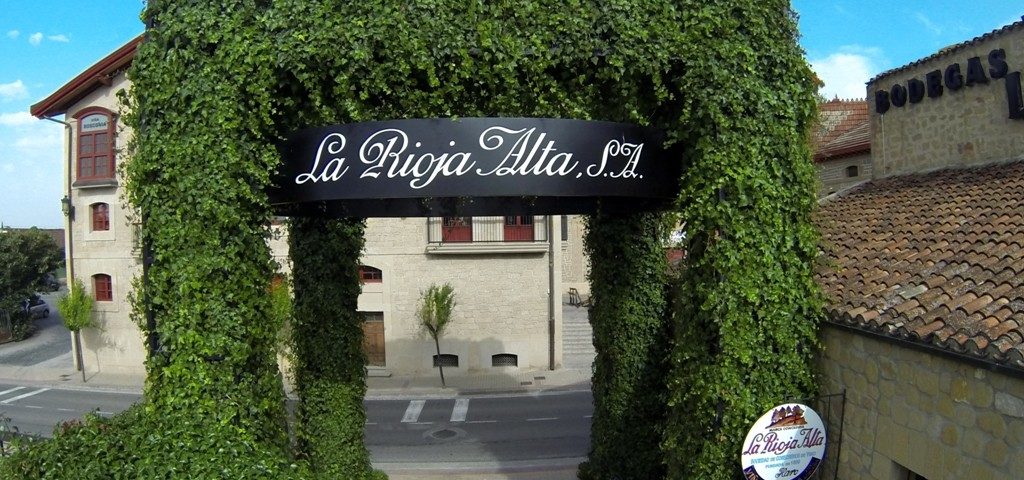
The region of Rioja is already famous for its range of high quality wines, particularly one of Spain’s flagship varieties, Tempranillo, which thrives in its vineyards. So what exactly is Rioja Alta, and what makes it stand out from its other Rioja counterparts? It’s omitted more often than not from wine labelling, so why does it matter? A great deal, according to some; for others, it’s more about the sum of its parts.
As WineTrust welcomes wines from the pioneering group that founded the ‘Sociedad Vinícola de la Rioja Alta’, we though it was worth digging a little deeper. When one explores the geography of arguably Spain’s most famous wine region, with a little help from five Riojan and Basque families, there are many reasons to celebrate this sub region in its own right.

Rioja is situated in Northern Spain, and its vineyards line the river Ebro and its tributaries. The Cantrabrian Mountains flank its western and northern side, providing shelter and allowing a much drier and warmer climate than in neighbouring areas. The region has a long wine growing tradition, almost unbroken from the Roman era.
Riojan winemaking received a major boost in the 19th century when wine merchants flocked to the region from neighbouring France, on the hunt for wine supplies after the devastation caused by a double whammy of mildew and phylloxera outbreaks in Bordeaux.
For what was disastrous for their French counterparts, many Riojan winemakers seized an opportunity. These included five investors, who in 1890 provided land, vineyards and money for the nascent Sociedad Vinícola de la Rioja Alta. One of these was Daniel Alfredo Ardanza y Sánchez, who merged his own Ardanza winery with the enterprise in 1904 – hence the 904 label for their commemorative Gran Reserva wine, still made to this day.

Photos courtesy of La Rioja Alta, SA ©
The founders realised that, through collaboration, they could fill the gap in the market for complex, well-structured red wines. Also, by setting up shop in the Barrio de la Estación district of Haro, they could ensure fast and efficient exporting via rail.
As French winemakers brought their expertise over the Pyrenees, so La Rioja Alta’s owners capitalised. They appointed French enologist, Albert Vigier, as cellar master, as well as importing 3500 barrels from Bordeaux.
The region’s love affair with oak can be attributed to this French connection. Prominent oak aromas and flavours still form an important part of the regional wine styles to this day, although today the preference is for American oak of course!
Oak is so fundamental to La Rioja Alta’s wine that they manufacture their own barrels. They import wood from the United States and leave to dry in the open for two years. Just as important is tradition, as barrels continue to be manufactured using artisanal methods – the winemakers even manually rack each barrel by candlelight during the ageing process!
La Sociedad Vinícola de la Rioja continued to grow in reputation and size, enjoying many successes under its old and new name, La Rioja Alta SA. But this only tells half the story; although the group now own wineries in other prominent Spanish wine regions, Rías Baixas and Ribera del Duero, La Rioja Alta SA still remains true to its roots. What else is behind this sub region’s success story? The answer begins in the vineyard…
 Rioja is split into seven valleys, with rich and varied geologies and different elevations. The variety of terroir on offer helps account for the great diversity in wine styles, from delicate Pinot Noir-esque to bold powerful reds, plus everything in between (and let’s not forget the whites too!). So what is it that makes Rioja Alta special?
Rioja is split into seven valleys, with rich and varied geologies and different elevations. The variety of terroir on offer helps account for the great diversity in wine styles, from delicate Pinot Noir-esque to bold powerful reds, plus everything in between (and let’s not forget the whites too!). So what is it that makes Rioja Alta special?
Rioja Alta occupies the westernmost part of the region, with vineyard situated at higher altitudes. The soils are a mix of iron-clay and alluvial deposits, often displaying a characteristic reddish hue. The wines here tend to have greater acidity and longer ageing potential. Importantly, Tempranillo thrives in these conditions, which is essential in producing the signature wine style of Rioja.
With their affinity for barrel ageing, all these elements come together to produce many of Rioja’s flag baring wines.

What sets La Rioja Alta SA apart is their ability to take advantage of the best terroir in Rioja Alta (and other sub regions). Traditionally, many large wineries in the region purchase grapes from growers; however, in since the 1970s La Rioja Alta SA have been steadily acquiring their own parcels. Today, they buy less than 10% of their grapes and own almost 400 hectares of vineyards!
This large portfolio also allows winemaker, Julio Sáenz, to take full advantage of the next part of the process – the blending. The blending of Riojan wine involves a careful selection of different parcels and grape varieties. Whilst Tempranillo forms the backbone of Rioja blends, other varieties such as Graciano, Garnacha and Mazuelo make up the balance. Garnacha adds body, spice and tart red berry flavours, Mazuelo provides colour and Graciano brings structure and aroma.
Whilst the Garnacha for the 2008 Viña Ardanza Reserva was sourced from Rioja Baja, as their La Pedriza vineyard provided the ideal conditions for that variety, grapes are still overwhelmingly sourced from Rioja Alta.
Whilst the group remain traditional to the core, the continued success of their brand and their wine, which now spans over 125 years, is testament to this sub region and the ability of its winemakers and investors to see and unlock its potential.
The group continue to pioneer and move forward, now producing wines aged in stainless steel in their new cellar in Labastida, to coming full circle by using French oak in the Ribera and Torre de Oña ranges. But their foundations are still firmly in place, and they were laid in Rioja Alta.

Want to try more from La Rioja Alta?
Try this delicious, gold medal winning Reserva from Viña del Oja, exhibiting classical elements of the Rioja style: classic vanilla oak, juicy red berry fruit, and a lovely notes of chocolate and dried fruit.
Try this rare bread of Rioja, a pure Graciano from the talented Ondarre winery.
Get the best of both worlds with this Tempranillo and Garnacha blend, sourced from Rioja Alta and Rioja Baja respectively. A product of the Spanish prodigy, Alvaro Palacios.
Indulge in another classic Rioja producer, Marqués de Murrieta. Savour the flagship single vineyard cuvee, The Castillo Ygay Gran Reserva Especial, or also discover the delicious white wine to come out of Rioja Alta with the Capellanía Reserva, made from the Viura grape.

